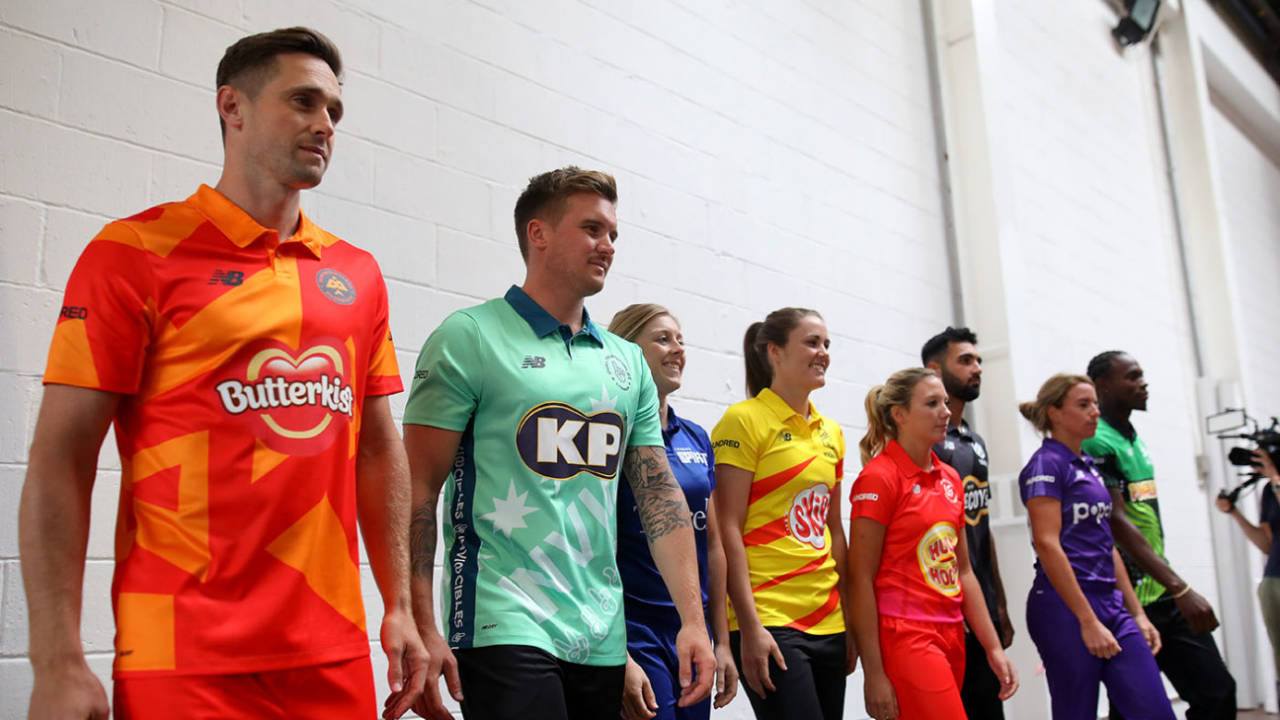Explainer: Will the Hundred make a profit?
The ECB has suggested the Hundred will bring in £11m for English cricket in its first season
George Dobell
06-May-2020
The Hundred was due to start in July • Getty Images for ECB
Last week the ECB opted to postpone the launch of its new competition, the Hundred, until 2021. With cricket in England and Wales facing significant financial disruption due to the coronavirus, ECB chief executive Tom Harrison has claimed that the case for the Hundred is stronger than before - but questions remain about its true cost to the game.
Harrison has said the ECB stood to make an £11m profit from the Hundred in its first year. Is that right?
What Harrison said, first in an interview with Sky and then to the Department for Culture, Media and Sport (DCMS) inquiry, was: "We can be completely upfront and say the budget [for the Hundred] is £40 million, and the [revenue] this year will be £51 million." That equates to a profit of £11m. Harrison has also referred to the Hundred as "a profit centre" on several occasions.
That sounds great. So what's the problem?
The revenue for the Hundred's first season was indeed expected to total £51.1m: a combination of UK broadcasting (£36.5m) and international broadcasting (£4m) revenue, sponsorship (£4m), tickets (£6.5m) and some from merchandising. And the "exact budget" is, according to an ECB spokesperson, £38.9m. Which, even though it has increased by more than £3m in recent months - £35.2m was the figure quoted towards the end of 2019 - sounds even better than Harrison suggested.
But there is an exclusion here that is quite important: payments of £1.3m to each of the first-class counties and the MCC, which contributes another £24.7m to the costs and takes the overall figure (at this stage, anyway) to £63.6m. If you look at it that way, the Hundred would lose more than £12m in its first year.
Why would such sums not be included in the ECB's costs?
Harrison insists the payments should be seen as a dividend not a cost. They are not negotiable; they are not moveable; and they are paid ahead of the tournament regardless of other income. This is what he told the DCMS inquiry: "The £1.3m every year to each county is a dividend and not part of the P&L [profit and loss] of the tournament. It's is not linked to the P&L."
So this is a question of accountancy practice?
It is. And there are those in the county game who say the costs are even greater. One county boss, who did not want to be named, estimated the actual figure for the first year should include another £15m to account for set-up costs - such as employing more people in the ECB's offices and the extensive usage of consultants and focus groups. That would take the overall expenditure to somewhere around £78.6m.
"The ECB has always attributed the cost of the £1.3m per county in the P&L, because that was what convinced many to support it," the source told ESPNcricinfo. "Since then the costs have rocketed. Tom Harrison's numbers also don't include set-up costs over the last four years of circa £15m, which have been quietly forgotten. The fact is, this competition will now never be profitable."
Where do the payments come from in the first place?
When the new competition was first suggested, many of the counties were hesitant to support it. Without a two-thirds majority, the ECB could not progress. So the 18 counties and the MCC were offered the payment in return for their media rights (the figure was based on a Deloitte report from 2016 that said the competition would produce a surplus of £31.9m). It helped convince the counties to vote in favour.
This is how Harrison put it when addressing the DCMS: "That £1.3m payment is part of the deal, if you like, that was done with the counties to give the ECB permission to create a new tournament with all the objectives sitting behind it."
So will the Hundred bring more money into English cricket?
Not as a net sum, although the ECB might argue that the "dividend" payments to the counties do count as extra money coming into the game. If you take the opposing view, the competition is not projected to make a profit in its five-year life cycle. But the ECB has always argued the competition is not just to raise money, it is also to raise awareness and popularity of the sport among an audience who are not currently attracted to the game. The Big Bash was an example of a league that did this second point very effectively without necessarily making an immediate financial profit. So it's entirely reasonable to believe the Hundred may make a financial loss but prove valuable for the ECB.
Has the Covid-19 pandemic changed the playing field?
Undoubtedly. The ECB went into this year with its reserves having dropped from £73m in 2016 to £11m now, leaving it ill-equipped to deal with such disruption. Although Harrison said at the start of this year that there was "more security in the game than there was for decades" - the ECB had signed a record £1.1 billion broadcast deal, after all - there was not a lot of contingency. The board's own accounts make note of the dangers posed by the likes of a terrorist attack or a period of national mourning and its own stated policy is to retain the equivalent of 40% of annual turnover in case of such events. That would have meant reserves of around £50m in recent years.
George Dobell is a senior correspondent at ESPNcricinfo
